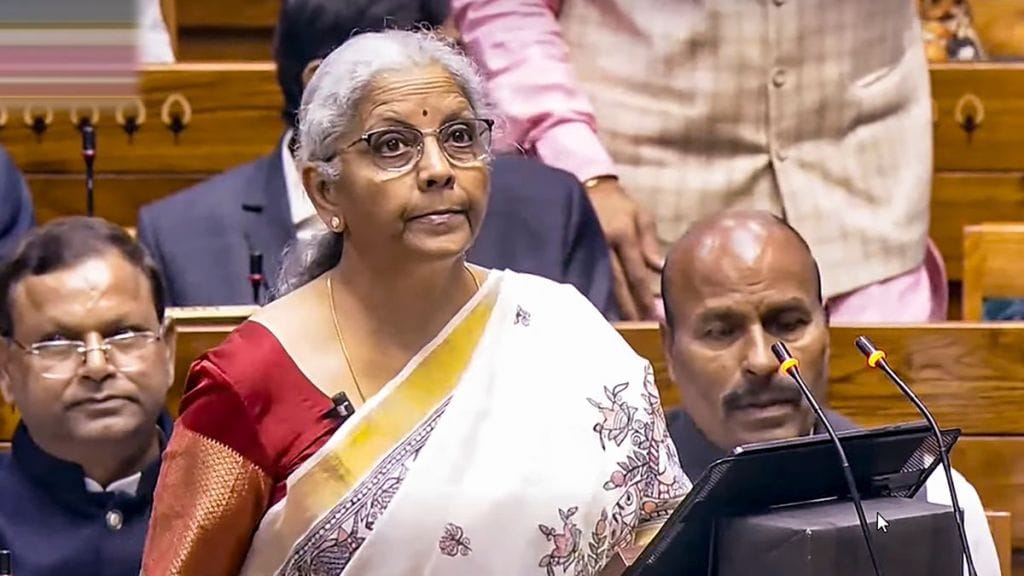India’s Union Budget for FY 2025-26, unveiled by Finance Minister Nirmala Sitharaman on Saturday (Feb 1, 2025), comes at a time when global trade dynamics are heavily influenced by the policies of US President Donald Trump. As India faces challenges like rising imports, stagnant exports, and a struggling manufacturing sector, Trump’s actions are casting a significant shadow over the nation’s economic strategy. Although many middle-class Indians are celebrating income tax announcements, these measures are not isolated from global forces, particularly Trump’s approach to international trade and manufacturing.
Trump’s Influence on Tax and Trade Policies
One of the key announcements made by Trump recently was his proposition to abolish income taxes in the US. This potential policy shift has far-reaching implications not only for the US economy but also for India’s fiscal strategy. Trump’s idea to cut taxes and boost domestic manufacturing in the US has put pressure on countries like India to remain competitive in both trade and investment, particularly in sectors that are closely tied to the US economy.
In response, India’s Finance Minister has made significant strides toward ensuring that the country’s manufacturing sector remains robust and attractive for foreign investments. One of the major proposals in the Union Budget 2025-26 is the continued push for the `Make in India’s initiative, which seeks to promote domestic manufacturing across all scales of industries. This is vital in light of Trump’s announcements that have changed the conversation around `American-made’ goods and the US’s return to manufacturing dominance.
Make in India
Sitharaman’s announcement of a National Manufacturing Mission, covering small, medium, and large industries, aims to boost India’s domestic production capabilities and reduce reliance on foreign goods. The focus on creating a competitive manufacturing sector is a direct response to global shifts, including Trump’s focus on US-centric production. By providing incentives for businesses to set up and expand manufacturing operations in India, the government hopes to counterbalance the impact of foreign competition, especially from China and the US.
Moreover, the Union Budget introduces changes to India’s customs tariff structure, designed to rationalize and reduce the complexity of import duties. These tariff changes aim to enhance the competitiveness of Indian industries and prevent domestic markets from being flooded with cheaper goods from abroad, especially from countries that may benefit from trade policies under Trump’s administration.
The Finance minister has also proposed reforms to increase Foreign Direct Investment (FDI) in the insurance sector by raising the limit from 74 percent to 100 %, signaling India’s intent to open up sectors vital for long-term economic growth.
Clean Energy and Nuclear Reactors
Another important area where India is aligning its goals with global trends is clean energy, an issue that has gained prominence under Trump’s leadership. The US has shifted towards energy independence, and now India is seeking to follow suit with its own bold ambitions. Sitharaman’s budget highlights the development of nuclear energy as a key component of India’s energy transition strategy.
The minister in her Budget speech stated, “Nuclear Energy Mission for Viksit Bharat Development of at least 100 GW of nuclear energy by 2047 is essential for our energy transition.” This push aligns with global shifts toward cleaner, more sustainable energy, and it signifies India’s ambition to reduce reliance on fossil fuels, much like the US’s focus on cleaner energy under the Trump administration.
The budget also includes provisions for advancing research and development in nuclear technology, with plans to operationalize at least five indigenously developed small modular nuclear reactors by 2033. This mirrors Trump’s push for technological innovation within the US, where nuclear energy is seen as an important part of future infrastructure.
The H-1B Visa and Impact on India’s IT Sector
One of the most direct ways in which Trump’s policies affect India is through his stance on immigration, particularly the H-1B visa program. As reported previously in FinancialExpress.com Trump has long been a critic of the visa, which has been vital for India’s booming IT industry. If Trump reintroduces restrictive policies that limit the number of H-1B visas issued, it could have a direct impact on India’s IT sector, which has long relied on sending skilled professionals to the US.
India’s IT industry is a significant contributor to the nation’s economy, and a decline in H-1B visa availability could reduce India’s foreign exchange earnings and tax collections. However, India is already preparing for such eventualities by diversifying its IT export markets. Domestic hiring models and a stronger focus on innovation through initiatives like `Digital India’ and `Skill India’ could mitigate the negative impacts. If Trump’s policies push Indian firms to seek new markets, the Union Budget 2025-26 may provide tax reliefs and incentives for companies looking to expand operations locally or in new international markets.


